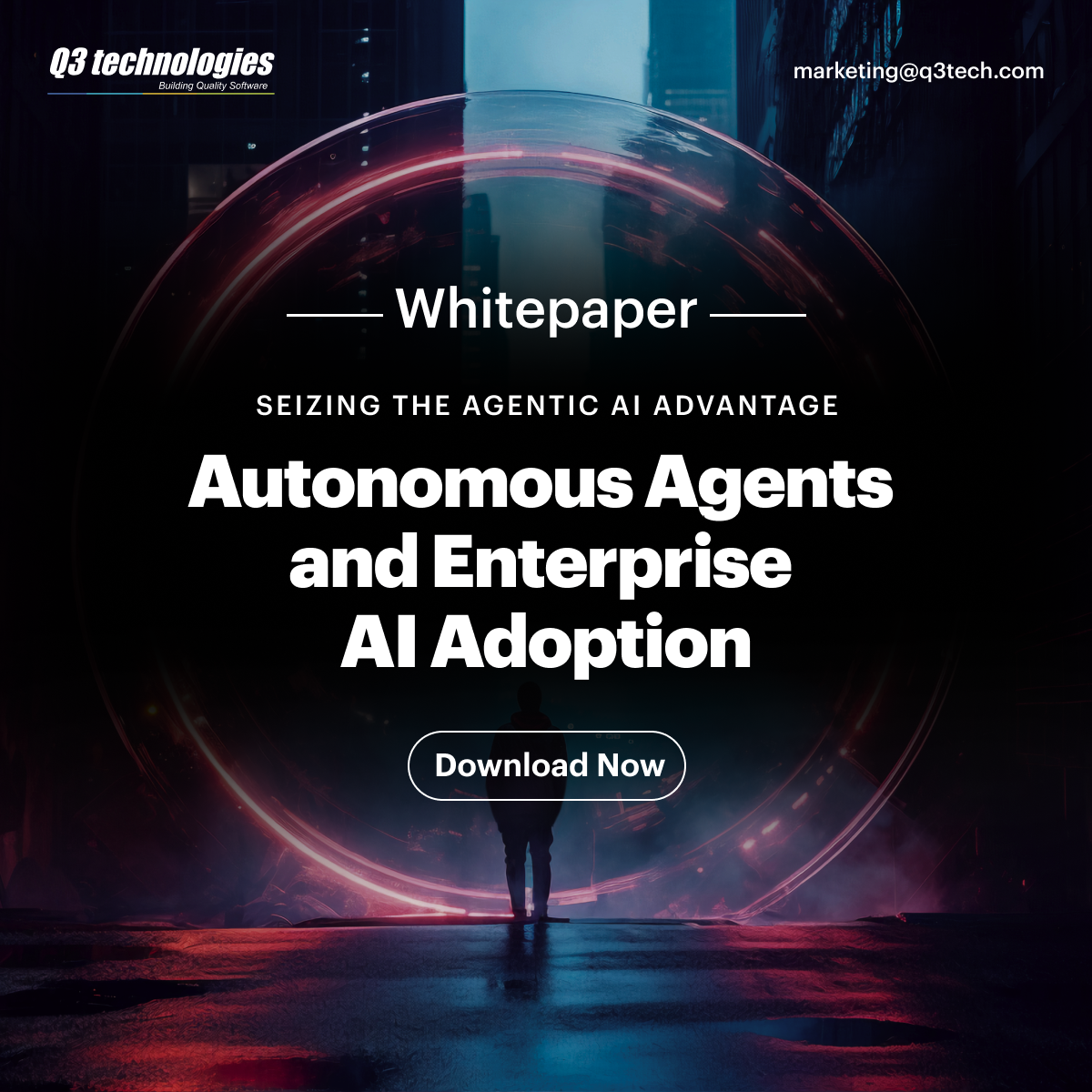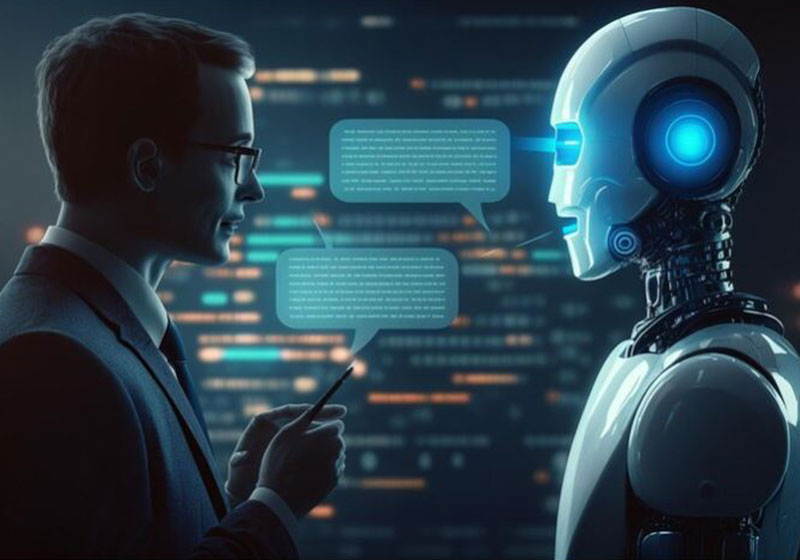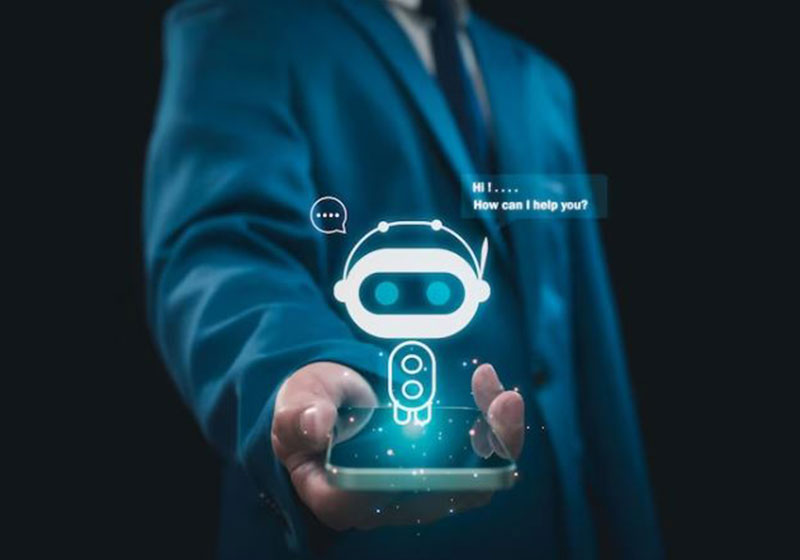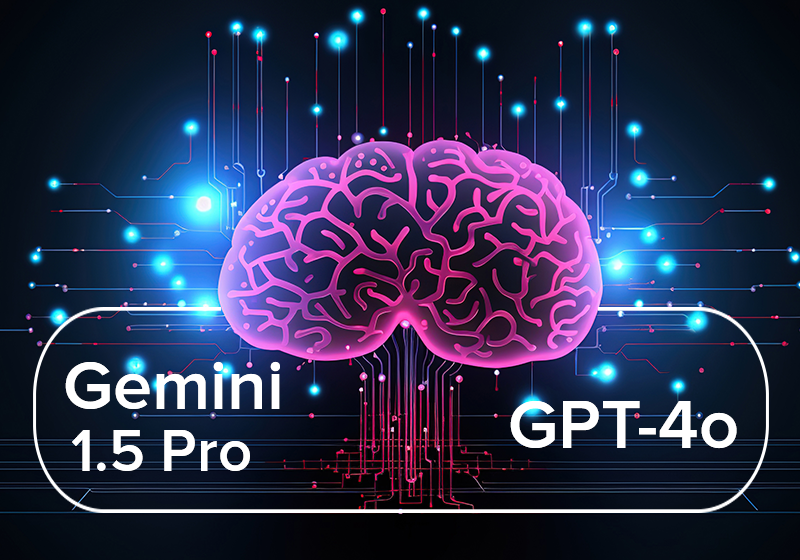Chatbots
Evolution of Chatbots: From Basic Queries to Complex Conversations
 Updated 14 Jun 2024
Updated 14 Jun 2024
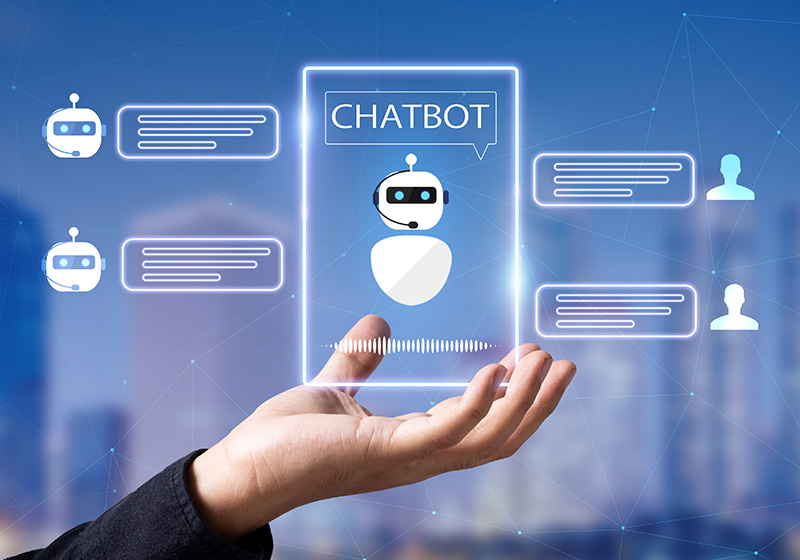
The history of chatbots dates back to the 1950s, when the idea of machines simulating human conversation first emerged. From the days of the early Chatbot like ELIZA to today’s AI-powered virtual assistants, chatbots have evolved into essential tools for modern businesses. Originally designed to handle basic queries, they now manage complex, context-aware conversations across multiple industries.
A chatbot development company plays a crucial role in building intelligent systems using machine learning, natural language processing (NLP), and human-like conversational interfaces. These applications provide 24/7 support, enhance customer satisfaction, automate workflows, and gather actionable data insights.
A trusted chatbot development company specializes in creating scalable and industry-specific chatbot solutions. Leveraging advanced AI technologies and user-centric design helps businesses streamline customer interactions, improve operational efficiency, and drive long-term growth.
Real-World Success Story – Elevating Booking Convenience with An AI-Powered Virtual Assistant For India’s Premier Hotel Chain
Technology Stack
- Microsoft Bot Framework
- ASP.NET MVC
- SQL 2014
Challenge
The client wanted to use an AI-powered virtual booking assistant to improve the consumer experience. This assistant needed to facilitate room selection and booking, provide a responsive and user-friendly interface and seamlessly integrate with their existing website while also functioning as a standalone application on desktops, tablets and mobiles.
Solution
The Q3 team developed a cutting-edge AI-based Virtual Booking Assistant leveraging the Microsoft Bot Framework and ASP.NET. This intelligent assistant enables users to effortlessly book hotel rooms, check available amenities, view special offers and apply discount coupons.
Key Features of the Solution Include
User Authentication – Users can sign in, sign up, or continue as guests to interact with the Chatbot. The bot personalizes interactions based on the user’s pre-set preferences and membership tier and automatically applies relevant membership discounts upon sign-in.
Backend Integration – Integration with the Client’s CMS application allows for easy management and addition of new hotels, including their detailed information.
Dynamic Offers and Discounts – The Chatbot provides a variety of offers and discounts tailored to upcoming festivals, holidays, and the user’s membership tier. These promotions are managed and activated or deactivated through the backend CMS portal.
Outcome
24/7 Support – The Virtual Booking Assistant offers round-the-clock support and enhances customer service availability.
Reduced Human Effort – Automation of the booking process significantly reduces the need for human intervention.
Instant Access and Time Saving – Users gain immediate access to booking services and information, streamlining the overall process.
Rich Interface – The application provides a visually appealing and intuitive user interface and ensures a seamless user experience.
This AI-driven solution not only meets the Client’s needs for a responsive and user-friendly booking system but also sets a new standard for customer engagement and efficiency in the hospitality industry.
Read Our Case Study: Elevating Booking Convenience With An AI-Powered Virtual Assistant For India’s Premier Hotel Chain
Journey of Chatbot Development
Alan Turning laid the foundation of chatbots in 1950 with his concept of the Turning Test. This is when the framework for the development of computer programs that could simulate human conversation began. Chatbot development services has since helped chatbots advance in their customer interactions. Chatbots today are sophisticated AI-driven virtual assistants that offer instant and accurate solutions to customers.
Early Foundations (1950s-1990s)
During the formative years of chatbot development, from the 1950s to the 1990s, several notable conversational agents emerged, each contributing to the evolution of this technology. In addition to ELIZA and PARRY, other significant chatbots included SHRDLU, Racter, Jabberwacky, and Dr. Sbaitso. These early pioneers laid the groundwork for the future development of chatbots, exploring different approaches to simulating human-like conversations.
ELIZA (1966)
ELIZA is a ground-breaking creation of the 1960s and represents a pivotal moment in the evolution of artificial intelligence. It was developed by Joseph Weizenbaum at MIT where ELIZA marked the first significant attempt to engage in computerized conversation. Its legacy continues to resonate, shaping the landscape of natural language processing and human-computer interaction.
Key Features of ELIZA
- Pattern Recognition: ELIZA excelled at pattern recognition, analysing user input to identify keywords and phrases. It then used these patterns to generate appropriate responses, creating the illusion of understanding.
- Reflective Dialogue: ELIZA engaged users in reflective dialogue, mirroring their statements back to them in the form of questions. This technique, inspired by Rogerian psychotherapy, encouraged users to dig deeper into their views and feelings.
- Scripted Responses: ELIZA’s responses were meticulously scripted, allowing it to simulate conversation without true comprehension. By following pre-defined scripts, ELIZA maintained consistency in its interactions, albeit at the expense of genuine intelligence.
- Rule-Based Interaction: ELIZA operated on a rule-based system, applying predefined rules to interpret user input and formulate responses. While effective for basic conversations, this approach limited ELIZA’s ability to adapt to novel situations or learn from experience.
- Influence on AI Development: ELIZA’s innovative approach to conversational agents paved the way for future advancements in artificial intelligence and natural language processing. Its legacy continues to inspire researchers and developers in the field of human-computer interaction.
PARRY (1972)
Developed in the early 1970s by Dr Kenneth Colby, PARRY embodied a character plagued by delusions and paranoia, offering a unique window into the complexities of human thought and behaviour. Through its role-playing capability and pattern-based responses, PARRY challenged conventional notions of AI and paved the way for deeper explorations into the intersection of technology and psychology.
Key Features of PARRY
- Simulation of Schizophrenia: PARRY was unique in its simulation of paranoid schizophrenia, replicating the behaviour and thought patterns associated with this mental disorder. By embodying a character with paranoid delusions, PARRY provided a compelling example of AI’s potential to model complex human conditions.
- Pattern-Based Responses: Similar to ELIZA, PARRY relied on pattern-based responses to interact with users. It analysed input for recognizable patterns and selected appropriate responses based on predefined scripts, maintaining the illusion of conversation.
- Role-Playing Capability: PARRY demonstrated remarkable role-playing capability, embodying a persona with distinct characteristics and behaviours. Through its simulated experiences of paranoia and delusion, PARRY challenged conventional notions of AI and human-computer interaction.
- Psychological Insight: PARRY’s interactions offered valuable insights into the psychological aspects of human-computer communication. By simulating the experience of mental illness, PARRY raised significant questions about the ethical implications of using AI to model complex human behaviours.
- Impact on AI Research: PARRY’s pioneering work in psychological simulation left a lasting impact on AI research and development. Its innovative approach to modelling human behaviour inspired new avenues of inquiry and contributed to the advancement of conversational AI and cognitive science.
Emergence of AIML (1990s-2010s)
During the dawn of structured chatbots, AIML (Artificial Intelligence Markup Language) emerged as a pivotal development in the 1990s. AIML provided a framework for creating conversational agents with rule-based responses, marking a shift towards more sophisticated interactions. As one of the earliest examples, AIML laid the groundwork for future chatbot technologies and offered a preview of the potential of natural language processing and AI-driven conversations.
Key Features
- Rule-Based Responses: AIML chatbots operate on a rule-based system, where user input is matched against predefined patterns to determine appropriate responses.
- Scripted Conversations: AIML bots engage users in scripted conversations, leveraging predefined rules to simulate human-like interactions.
- Adaptability: AIML’s modular structure allows developers to easily modify and expand chatbot capabilities, making it adaptable to various applications and industries.
- Language Processing: AIML enables basic natural language processing, empowering chatbots to understand and respond to user queries in a conversational manner.
ALICE (1995)
ALICE refers to Artificial Linguistic Internet Computer Entity. It emerged as a pioneering chatbot in the mid-1990s. It was developed by Dr. Richard Wallace. The chatbot represented a significant leap in natural language processing and AI-driven conversation. Its innovative approach to simulating human-like interactions set the foundation for forthcoming advancements in chatbot technology.
Key Features
- AIML-Based Architecture: ALICE was built using AIML (Artificial Intelligence Markup Language), a scripting language tailored for creating conversational agents. This allowed for the creation of dynamic and responsive chatbots.
- Rule-Based System: ALICE operated on a rule-based system, where user input was matched against predefined patterns to generate appropriate responses. This approach enabled ALICE to engage users in evocative conversations on a wide range of topics.
- Open-Source Nature: ALICE was released as an open-source project, fostering collaboration and innovation within the developer community. Its accessibility contributed to the widespread adoption and evolution of chatbot technology.
- General Conversational Agent: ALICE was designed to function as a general conversational agent capable of engaging users in discussions spanning various subjects. Its versatility made it adaptable for use in customer service, entertainment, and educational applications.
Unlock the Power of AI Chatbots for Your Business!
Partner with Q3 Technologies to build intelligent, conversational AI solutions tailored to your industry needs.
SmarterChild (2001)
SmarterChild emerged as a pioneering chatbot in the early 2000s, captivating users with its interactive and conversational capabilities. Developed by ActiveBuddy, later acquired by Microsoft, SmarterChild revolutionized the way people interacted with instant messaging platforms. Its integration into popular messaging services marked a significant milestone in the progression of chatbot technology.
Key Features
- Instant Messaging Integration: SmarterChild seamlessly integrated into popular instant messaging platforms and allowed users to interact with it within a familiar chat interface.
- Information Retrieval: SmarterChild offered a wide range of information retrieval services, from answering trivia questions to providing weather updates and sports scores. Its ability to fetch real-time information made it a valuable resource for users.
- Natural Language Understanding: SmarterChild demonstrated a degree of natural language understanding and enabled it to engage users in conversational interactions. Its ability to interpret user queries and respond in a human-like manner enhanced the user experience.
- Versatility: SmarterChild’s versatility extended beyond information retrieval, with capabilities to perform tasks like setting reminders, answering queries and providing entertainment. Its multifunctional nature made it a popular choice among users seeking assistance and entertainment on messaging platforms.
Rise of NLP and AI (2010s-2020s)
The 2010s to the 2020s marked a transformative period in chatbot development, characterized by the widespread adoption of natural language processing (NLP) and AI. With the beginning of neural networks and deep learning, chatbots evolved to offer more sophisticated capabilities than ever before. This era saw the emergence of several landmark innovations, including Siri (2011), Watson by IBM (2011), Cortana by Microsoft (2014), Google Assistant (2016), Alexa by Amazon (2014), BERT (2018), Duplex by Google (2018), Samantha West (2017) and ChatGPT (2020). These advancements revolutionized human-computer interaction and paved the way for smarter, more intuitive chatbots capable of understanding and answering to natural language queries in real time.
Siri (2011)
Siri is the revolutionary virtual assistant that emerged as a game-changer in human-computer interaction when it was introduced by Apple Inc. in 2011. Designed to operate seamlessly across Apple devices, Siri revolutionized the way users interacted with technology by offering a voice-controlled interface for tasks ranging from setting reminders to conducting web searches.
Key Features
- Natural Language Processing: Siri harnesses advanced natural language processing (NLP) technology to comprehend and interpret user commands and queries spoken in everyday language.
- Task Automation: With Siri, users can perform a wide range of tasks hands-free, including sending messages, making phone calls, setting alarms, scheduling appointments and more.
- Context Awareness: Siri is contextually aware, allowing users to ask follow-up questions or issue commands related to previous interactions, enhancing the conversational experience.
- Voice Feedback: Siri provides users with voice feedback, delivering spoken responses to queries and commands, making interactions more intuitive and accessible, especially in hands-free scenarios such as driving.
Future Evolution Chatbots (2020–2025)
The launch of ChatGPT in 2020 marked a defining shift in conversational AI. Since then, chatbots have progressed into intelligent, multimodal AI agents capable of human-level reasoning, task execution, and real-time decision-making. These advanced systems go far beyond what an early Chatbot could do and now act as digital co-workers across industries.
Latest Advancements (2025)
- Multimodal Intelligence: Chatbots in 2025 are now able to simultaneously process text, voice, images, documents, and even video inputs, enabling richer and more contextual interactions.
- Autonomous AI Agents: Powered by models like GPT-4.5 and beyond, chatbots now complete workflows end-to-end—such as booking travel, generating legal contracts, or automating onboarding—without human input.
- Enterprise Integration at Scale: Modern bots integrate deeply with CRMs, ERPs, and data lakes, offering real-time analytics, summaries, and next-step recommendations within complex digital ecosystems.
- Emotional Intelligence: AI now better understands tone, sentiment, and context, making conversations more human-like and empathetic—something early Chatbot models lacked entirely.
- Regulatory Compliance & AI Governance: 2025 chatbots now come with embedded compliance layers for GDPR, HIPAA, and AI auditability, crucial in enterprise use.
- Plug-and-Play Deployment: Platforms like Azure Bot Services and Google Dialogflow CX offer pre-trained conversational agents and drag-and-drop interfaces for rapid, large-scale deployment.
These breakthroughs represent a remarkable leap in the history of chatbots, evolving them from simple query-based tools into enterprise-ready digital agents that deliver measurable ROI and redefine how businesses interact with customers, employees, and partners.
Read Our Case Study: Revitalizing Sales Enablement With An AI-Powered Chatbot For A Leading FMEG Company
Industry-Specific Applications (2020s-Present)
Chatbots have transcended their initial role as simple conversational interfaces and have found diverse applications across various industries. Some of them are as below:
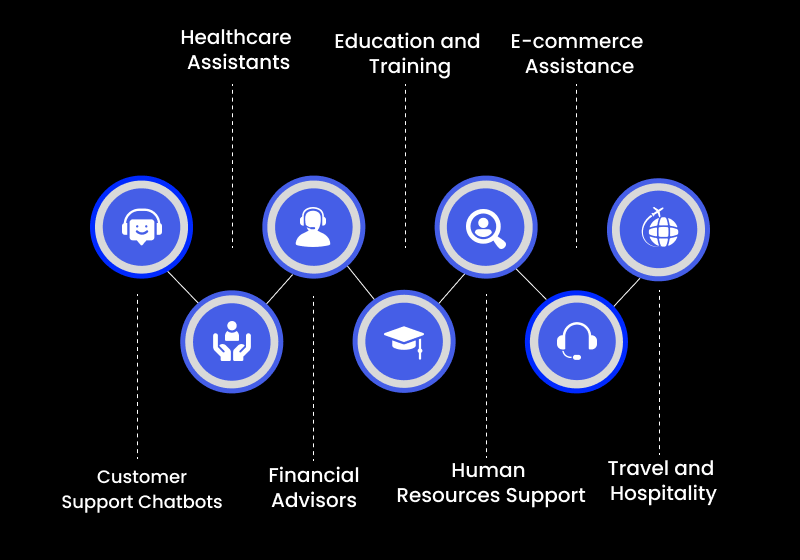
1. Customer Support Chatbots
- Chatbots are increasingly employed by companies to manage routine customer inquiries to provide swift responses and have freed human agents for more complex issues.
- They contribute to improved customer satisfaction by offering round-the-clock support and addressing queries promptly.
2. Healthcare Assistants
- In telemedicine and healthcare, chatbots serve as virtual assistants, offering information, scheduling appointments, and even providing mental health support.
- They enhance accessibility to healthcare services, especially in remote areas, by offering immediate assistance and guidance.
3. Financial Advisors
- Within the finance industry, chatbots are utilized to assist customers with tasks like account management, investment recommendations and fraud detection.
- They provide personalized financial advice based on individual preferences and financial goals and boost customer engagement and satisfaction.
4. Education and Training
- Chatbots are increasingly integrated into educational platforms to provide personalized learning experiences, answer student queries, and offer educational resources.
- They facilitate self-paced learning, offering instant feedback and guidance to students and speeding up the learning process.
5. E-commerce Assistance
- In the realm of e-commerce, chatbots rationalize the shopping experience by offering product recommendations, helping with order tracking, and resolving customer queries.
- They enhance customer engagement by providing personalized recommendations based on browsing history and preferences.
6. Human Resources Support
- Chatbots are utilized in human resources to assist employees with inquiries related to policies, benefits, and training programs.
- They automate routine HR tasks such as leave requests and onboarding processes which allows HR professionals to focus on strategic initiatives.
7. Travel and Hospitality
- Within the travel and hospitality industry, chatbots serve as virtual concierges, assisting customers with booking reservations, providing travel recommendations, and offering itinerary suggestions.
- They enhance the overall travel experience by offering tailored assistance and recommendations according to individual preferences.
Benefits Offered by Chatbots
Chatbots provide many benefits across various industries. Some of them have been mentioned below:
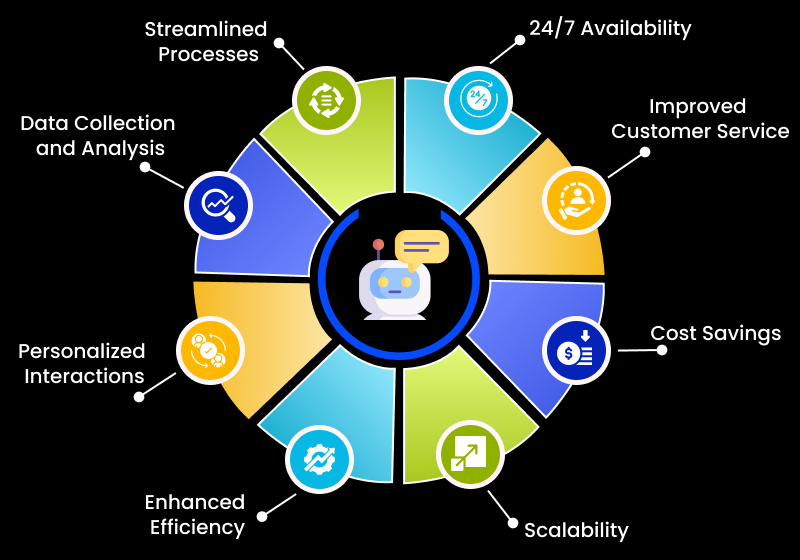
1. 24/7 Availability
Chatbots are available round-the-clock, allowing businesses to provide support and assistance to customers at any time, regardless of time zones or operating hours.
2. Improved Customer Service
By automating responses to frequently asked questions and common issues, chatbots can deliver quick and consistent support and enhance overall customer satisfaction.
3. Cost Savings
Implementing chatbots can lead to significant cost savings by reducing the need for human customer service agents, especially for handling routine inquiries and tasks.
4. Scalability
Chatbots can handle numerous conversations simultaneously, which makes them scalable solutions for businesses experiencing high volumes of customer inquiries or interactions.
5. Enhanced Efficiency
By automating repetitive tasks and processes, chatbots free up human agents to emphasise on more complex issues and enhance overall operational efficiency.
6. Personalized Interactions
Advanced chatbots can leverage customer data and preferences to deliver personalized interactions, boost the overall customer experience, and drive engagement.
7. Data Collection and Analysis
Chatbots can collect valued data from customer interactions, providing insights into customer preferences, behavior patterns, and frequently asked questions, which businesses can use to elevate their products and services.
8. Streamlined Processes
By integrating with backend systems and databases, chatbots can streamline various processes such as appointment scheduling, order tracking, and information retrieval, which reduces manual effort and improves workflow efficiency.
Explore Our Full Chatbot Success Stories
See how Q3 Technologies transformed customer engagement across industries with cutting-edge virtual assistants.
Challenges and Future Directions
While chatbots have come a long way, several challenges remain:
While chatbots offer numerous benefits, they also present several challenges that organizations need to address:
1. The complexity of Natural Language Processing (NLP)
Developing chatbots with robust NLP capabilities can be challenging due to the complexity of human language, including slang, ambiguity, and context-dependent meanings.
2. Ensuring Accuracy and Reliability
Chatbots must provide accurate and reliable responses to user queries. Ensuring that they understand user intent correctly and provide relevant information without errors can be challenging, especially in dynamic and unpredictable conversational scenarios.
3. Handling Complex Queries
Chatbots may struggle to handle complex or ambiguous queries that require nuanced understanding or domain-specific knowledge. This limitation can frustrate users and diminish the effectiveness of chatbot interactions.
4. Data Privacy and Security
Chatbots often handle sensitive information, such as personal or financial data. Ensuring the confidentiality of user data, including compliance with data protection regulations, is significant to maintain trust and credibility.
5. Integration with Existing Systems
Integrating chatbots with existing systems and databases can be complex, especially in large organizations with legacy IT infrastructure. Ensuring smooth integration and interoperability is essential to maximize the efficiency and effectiveness of chatbot deployments.
FAQs
Q. What industries use chatbots?
A. Chatbots are widely utilized across industries such as customer service, healthcare, finance, e-commerce, and education. They assist in tasks ranging from answering queries and providing support to facilitating transactions and delivering personalized recommendations.
Q. How do chatbots work?
A. Chatbots operate using algorithms and AI technologies to interpret user input and generate appropriate responses. They analyse language patterns, understand context, and use pre-programmed responses or machine learning to engage in conversation.
Q. How are chatbots evolving beyond text-based interactions?
A. Modern chatbots integrate voice recognition, image recognition, and other multimodal interfaces to support richer forms of interaction. They are also incorporating AI-driven features like sentiment analysis and emotional intelligence to enhance the quality of conversations and user engagement.
